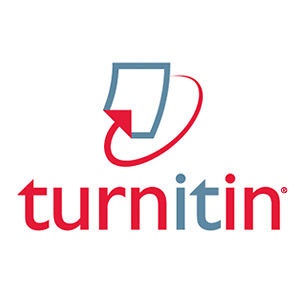Comparison of Sharia Economic Law Thoughts Oni Syahroni and Erwandi Tarmizi on Administration Fees and Discounts on E-Money
Abstract
This paper tries to find out the thoughts of Sharia Economic Law by Dr Oni Sahroni, MA and Dr. Erwandi Tarmizi, MA on E-money applications in theory and practice such as administrative costs and the practice of discount. This research is library research with the data collected through qualitative domain analysis. The data analysis techniques used are data reduction, data display and data verification. The study findings are as follows: (1) Both agreed that the use of E-money is currently allowed if there is a Semi-Emergency (Hajjah) situation and it is used appropriately if there is Udzur since the majority of E-money currently available does not meet the criteria of DSN MUI fatwa; (2) Administration Fee in E-money is allowed as long as the costs incurred are actual costs; (3) Dr. Oni Sahroni stated that the discount on E-money was legally allowed if there is no preconditions followed, while Dr. Erwandi Tarmizi suggested not using a digital wallet at a discount because the discount used for payment could be in the form of interest.
Keywords
Full Text:
PDFReferences
Afif, M., & Ari Salman, A. (2017). Electronic money (e-money) dalam perspektif maqashid syariah. Journal of Islamic Economics Lariba, 3(2), 75–84.
Alam, A. (2016). Perkembangan Ekonomi Islam: Perspektif Filosofis. Proceeding of International Conference On Islamic Epistemology, 63–68.
Al-Qarafi, Idris, A. B., & Al Ibbas, A. (2001). Anwar al-Buruq fi Anwa’al-Furuq (M. A. Sarraj & A. Jum’ah, Eds.). Dar Al-Salam.
Apriantoro, M. S., Sabila, R. F., & Rosyadhi, R. I. (2022). Islamic Law Perspective in the Application of My Pertamina as a Non-Cash Payment System and Control of Fuel Subsidy Flow. Journal of Transcendental Law, 4(1), 71–80. https://doi.org/10.23917/jtl.v4i1.19976
Athief, F. H. (2019). Konsep ’Urf Sebagai Variable Produk Hukum. Suhuf, 40–57.
Bank Indonesia. (2014). Peraturan Bank Indonesia No.16/8/PBI/2014.
Bank Indonesia. (2018). Peraturan Bank Indonesia No.20/6/PBI/2018 tentang Uang Elektronik.
Bank Indonesia. (2021). Statistik Sistem Pembayaran. https://www.bi.go.id/id/statistik/ekonomi-keuangan/ssp/uang-elektronik-jumlah.aspx.
Cresswell, J. W. (2013). Cresswell, J. W. (2013). Qualitative Inquiry and Research Design. California: SAGE. SAGE.
Dibyo Purnomo, R. S., Serfiyani, Ci. Y., & Hariyani, I. (2012). Untung dengan kartu kredit, kartu ATM-debit & Uang Elektronik (1st ed.). visi media pustaka.
DSN MUI. (2017a). Fatwa DSN-MUI 112/DSN-MUI/IX/2017 Tentang Akad Ijarah.
DSN MUI. (2017b). Fatwa DSN-MUI 116/DSN-MUI/IX/2017 tentang Uang Elektronik Syariah.
Febriandika, N. R., & Hakimi, F. (2020). Analisis Kesesuaian Syariah Electronic Money Pada Bank Penerbit Uang Elektronik Di Indonesia. An-Nisbah: Jurnal Ekonomi Syariah, 7(1).
Hidayati, S., Nuryanti, I., Fadly, A. F. A., & Darmawan, I. Y. (2006). Operasional E-MOney. Bank Indonesia. https://docplayer.info/26221-Operasional-e-money-kajian-siti-hidayati-ida-nuryanti-agus-firmansyah-aulia-fadly-isnu-yuwana-darmawan.html
Kurniawan, D., Wilem J.F.A, T., & Roring, F. (2021). Pengaruh Image, Viral Marketing, dan Brand Trust Terhadap Penggunaan Aplikasi E-money Fintech Pada Mahasiswa Di Universitas Sam Ratulangi Saat Pandemi COVID-19. Jurnal EMBA, 9(3), 695–704.
Laily Romadloniyah, A., & Dwi Hari, P. (2018). Pengaruh Persepsi Kemudahan Penggunaan, Persepsi Daya Guna, Persepsi Kepercayaan, Dan Persepsi Manfaat Terhadap Minat Nasabah Dalam Menggunaan E-Money Pada Bank Bri Lamongan. Jurnal JPENSI, 3(2), 699–711.
Muh, S., & Yaasin R, M. (2021). Kedudukan E-Money Sebagai Alat Pembayaran Dalam Perspektif Hukum Islam. Jurnal El-Iqtishady, 3(1).
Permana, I. (2020). Penerapan Kaidah-Kaidah Fiqih Dalam Transaksi Ekonomi Di Lembaga Keuangan Syariah. Tahkim (Jurnal Peradaban Dan Hukum Islam), 3(1). https://doi.org/10.29313/tahkim.v3i1.5617
Permatasari, M. P., & Endriastuti, A. (2020). Pelatihan Pemanfaatan Media Sosial Sebagai Alat Pemasaran Bagi Umkm Di Kecamatan Kedungpring, Kabupaten Lamongan, Jawa Timur. Jurnal Layanan Masyarakat (Journal of Public Services), 4(1), 91. https://doi.org/10.20473/jlm.v4i1.2020.91-99
Sahroni, O. (2019). Belanja Pakai Uang Digital. Republika. https://muamalahdaily.com/wp-content/uploads/2021/01/2019-05-16.jpeg
Sahroni, O. (2019). Konsultasi Syariah Diskon dan Cashback Uang Digital. https://www.republika.co.id/berita/py9dq4370/konsultasi-syariah-diskon-dan-cashback-uang-digital
Sahroni, O. (2020). Fikih Muamalah Kontemporer (3rd ed.). Republika.
Tarantang, J., Kurniawan, R., & Muhammad F. F, G. (2020). Electronic Money Sebagai Alat Transaksi Dalam Perspektif Islam. An-Nisbah : Jurnal Ekonomi Syariah, 7(1), 1–21.
Tarmizi, E. (2018a). Hukum Go-pay dan E-Money—Ustadz Dr. Erwandi Tarmizi, MA. https://www.youtube.com/watch?v=6tVkfhzQ2R4
Tarmizi, E. (2018b). Pembayaran Digital (e-Money) | Ust. Erwandi Tarmizi. https://www.youtube.com/watch?v=x0Uq2mFLLq8
Tarmizi, E. (2019). Harta Haram Muamalat Kontemporer. Berkat Mulia Insani. http://inlislite.uin-suska.ac.id/opac/detail-opac?id=16511
DOI: https://doi.org/10.24952/masharif.v11i2.9714
Refbacks
- There are currently no refbacks.
Copyright (c) 2023 Al-Masharif: Jurnal Ilmu Ekonomi dan Keislaman

This work is licensed under a Creative Commons Attribution-ShareAlike 4.0 International License.

Plagiarism Checked by:






